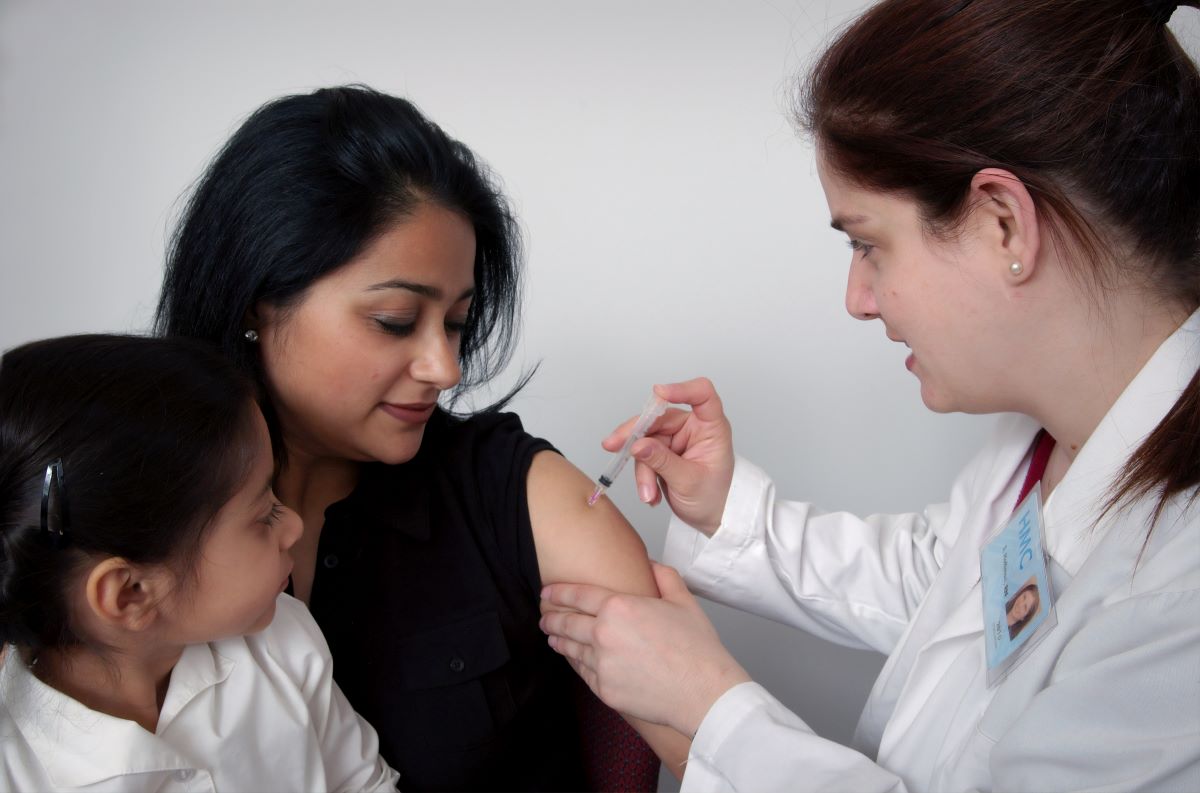
Can not speaking English kill you? by Peter White
For the millions of Americans with limited English proficiency, finding providers who speak their language continues to be a challenge, hampering access to quality care.
The St. Thomas Family Health Center in Nashville serves patients of all ages whether or not they have insurance. The community clinic is part of the Ascension Medical Group, a large non-profit Catholic healthcare system with hospitals and clinics in 16 states.
This popular center is located on Nashville’s west side, right next to St. Ann’s Catholic Church on Charlotte Avenue. Both minister to a largely immigrant population and have been there for more than two decades.
The clinic is open 45 hours per week and provides primary care for immigrant women and their children as well as patients with chronic illnesses like diabetes.
Physical exams, pap smears, blood tests, low-cost prescriptions, vaccines, and flu shots are all available. Spanish-speaking mothers who are pregnant or have young children chat amiably with the front office staff who are all bi-lingual. Most of the nurses and practitioners are also bi-lingual.
Culturally-Appropriate Health Care
But St. Thomas may be an anomaly in the health care world. Fourteen million people in the US do not speak English, while 25.5 million say they speak it “less than very well.” Yet finding providers who speak at least one of the panoply of languages spoken in the US is a difficult task that prevents non-English and limited English proficient speakers from getting the care they need.
When it comes to preventive services, more people with little or no English have not had their blood pressure taken or cholesterol checked in the last two years, have not gotten a flu shot or had a physical or seen a dentist in the last year.
Cancer Screenings
Dr. Ingrid J. Hall, an epidemiologist with the Division of Cancer Prevention and Control at the Centers for Disease Control and Prevention published a recent study of Hispanic adults linking English proficiency to access to healthcare services.
Hall measured differences between three groups of patients. The control group, non-Hispanic whites, had the highest percentage (84%) of regular health care. The group who were comfortable with English (78%) was second highest. Only 69% of Hispanics with limited comfort speaking English had a regular provider.
The epidemiologist led the CDC’s campaign to make more women aware of the importance of getting mammograms to find breast cancer early.
Health Literacy
“Our money from Congress goes directly to the state. Then we encourage our state partners to partner with community based organizations that are going to reach the populations that we want to reach,” Hall said at an Ethnic Media Services news briefing July 21.
Regular screening and prompt diagnosis can reduce illness and death from breast or cervical cancer especially for women over 50 who account for more than 75% of those cancers.
Improving health literacy and addressing barriers to care will require a “multi-pronged” approach including education, insurance disparities, and other social determinants of health, said Hall.
Changing Demographics
Dr. Latha Palaniappan, co-founder of Stanford University’s Center for Asian Research and Education — CARE — said the demographics of the U.S. population have changed dramatically in recent decades.
From 1980 to 2019, the number of people in the US who spoke a language other than English at home nearly tripled, according to the U.S. Census Bureau. Sixty-seven million people in the U.S. speak a language other than English at home.
Chinese, Korean, and Vietnamese are the top 3 languages of households that have limited or non-English speakers. Fourth most common is Russian, Polish, and other Slavic languages grouped, and then Spanish, said Palaniappan, referring to US Census data.
Longer Hospital Stays
These non-English speakers are a very significant proportion of the population, said Palaniappan. And patients whose providers don’t speak their language reported receiving less health education, worse care, and lower patient satisfaction.
“The length of stay if an interpreter isn’t used at admission or discharge at a hospital stay is increased by 3 days. There’s increased thirty-day readmissions, for instance, among congestive heart failure. There’s more infections, falls, surgical site infections, pressure injuries, delays in surgery, and problems with medication management,” said the physician.
“Under section 1557 of the ACA (Affordable Care Act) health care providers are required by law to provide qualified interpreting services free of charge,” Palaniappan noted. But saying that doesn’t make it so.
Providers often rely on informal interpreters like friends or family members, but that is generally prohibited except in emergencies. Nothing is better than an in-person interpreter, but telephone or video based interpretation works and can be cost effective, she said.
Systemic Change
Dr. Elena V. Rios is President & CEO of the National Hispanic Medical Association, (NHMA), representing 50,000 Hispanic physicians in the US. The mission of the organization is to improve the health of Hispanics.
Only 15 states actually have Medicaid that reimburses for language services. “So we need to change the system. We need to reimburse language services for providers, for hospitals, for clinics, for doctors offices,” Rios said.
“Language services could be helped by having more doctors or nurses, for example, from those countries that speak the languages that are needed here,” she said.
“There’s definitely a need for reimbursement at all levels but especially in the poor communities that don’t have top jobs or don’t have higher incomes. Most people don’t go to the doctor because they can’t pay for it and they don’t have insurance. So we continually need more prevention,” said Rios.
